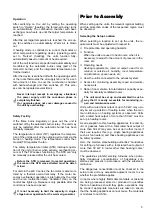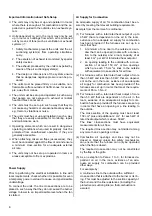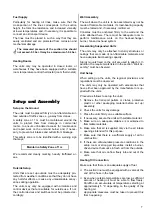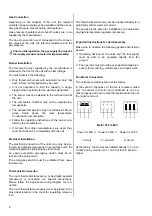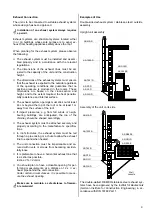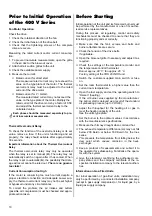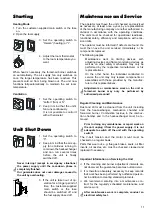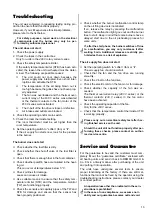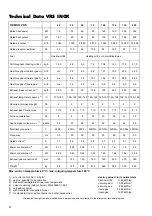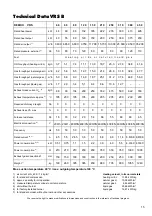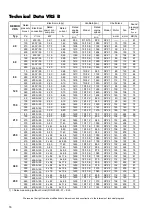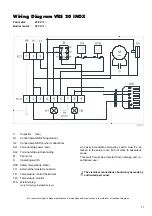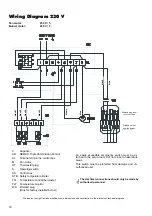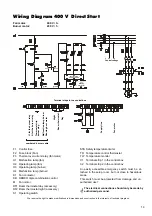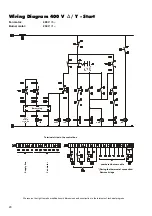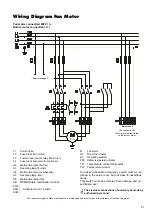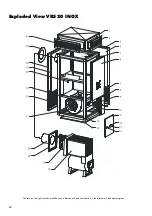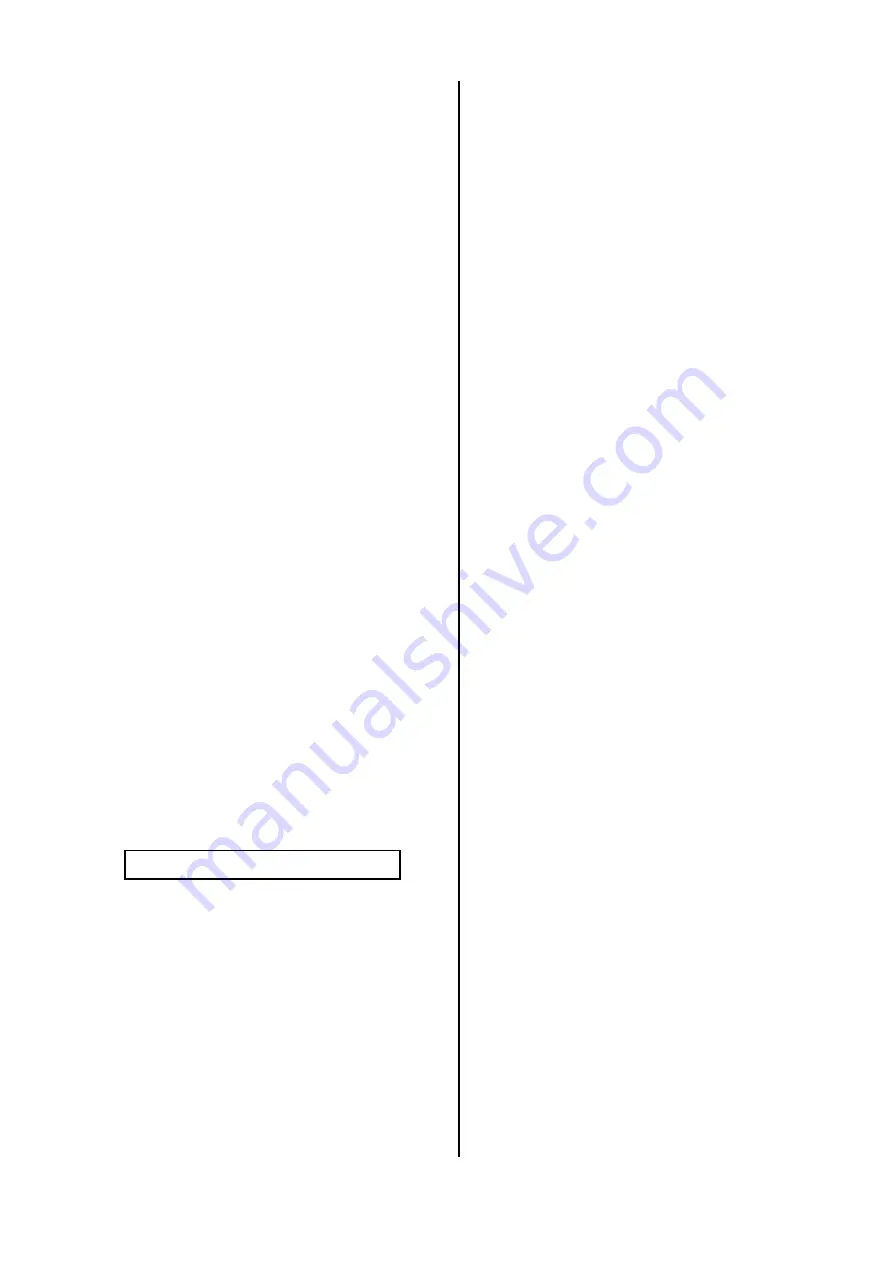
7
Fuel Supply
Particularly for heating oil lines, make sure that the
cross-section of the lines corresponds to the suction
height, the total line resistance and increased viscosity
at lower temperatures and, if necessary, it is possible to
connect an oil transport device.
The lines must be placed in such a way that they are
easily ventilated and are protected from corrosion and
mechanical damage.
Setup and Assembly
Setup on the Ground
The units must be placed firmly on non-flammable sur-
face outside of traffic zones, e.g. away from cranes.
A safety zone of 1 m must be maintained around the
units to protect them from damage in commercial
rooms, to ensure unhindered access for maintenance
and repair work on the unit and burner and, if neces-
sary, to prevent air intakes and outlets from blockage.
This safety zone is to be identified with a warning sign
that says:
Maintain a Safety Zone of 1 m
We recommend clearly marking heavily trafficked ar-
eas.
Wall Assembly
The wall where the unit is to be assembled may not be
made of flammable materials. Its load-bearing capacity
must be tested and, if necessary, reinforced.
Consoles must be anchored firmly to the wall and the
units attached here. There must be adequate room to
perform maintenance work on the heat-exchanger,
burner, fan and exhaust system.
Heating Rooms
The units only may be operated in closed rooms or
warehouses if they have been equipped with a suitable
room temperature control thermostat (room thermostat).
G
The measured pressure of the suction line should
not exceed -0.3 bar. It may be a maximum of -0.4 bar.
Assembling Suspended Units
The units may only be attached to sturdy structures or
ceilings that are made of non-flammable materials and
have adequate load-bearing capacity.
Sturdy mounts fixed on the unit are used to attach it. In
addition, the requirements listed in the section “Wall As-
sembly” must be observed.
Outside Setup
Units that are set up outside must be adequately pro-
tected from weather conditions so that they do not have
any harmful effects or cause any unreasonable annoy-
ances during operation.
The units may only be equipped with armatures and
control devices that are suitable for outside use. If not,
the control devices and switches must be protected ac-
cordingly.
Unit Setup
When setting up the units, the regional provisions and
regulations must be observed.
The units may only be operated with accessories that
have either been approved by the manufacturer or sup-
plied with the units.
Proceed as follows to set up the units:
1. Remove the transport pallets or crates, protective
plastic or other packaging material before set up/
assembly.
2. Check the units for any damage.
3. Place the units firmly on a suitable surface.
4. If necessary, secure the units with suitable material.
5. Make sure an adequate distance is maintained to
flammable materials.
6. Make sure that air is supplied only via the air intake
openings intended for this purpose.
7. Make sure that there is a sufficient supply of air for
combustion.
8. If there are unfavourable pressure conditions in the
setup room or strong air impurities, install a burner-
driven device that sucks in fresh air from the outside.
9. Make sure that air can flow freely into and out of the
units.
Heating Oil Connection
Make sure that there is an adequate supply of fuel.
◊
The suction line must be equipped with a valve at the
end of the hose in the tank.
◊
Even when outside temperatures are low, a sufficient
amount of heating oil must be able to flow freely.
Paraffin can accumulate at temperatures starting at
approximately 5 °C depending on the quality of the
heating oil.
Appropriate measures must be taken to prevent this
from happening.





